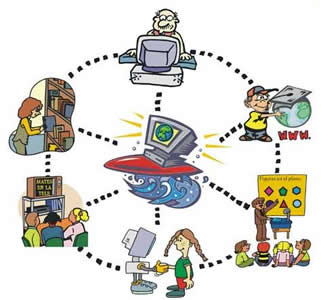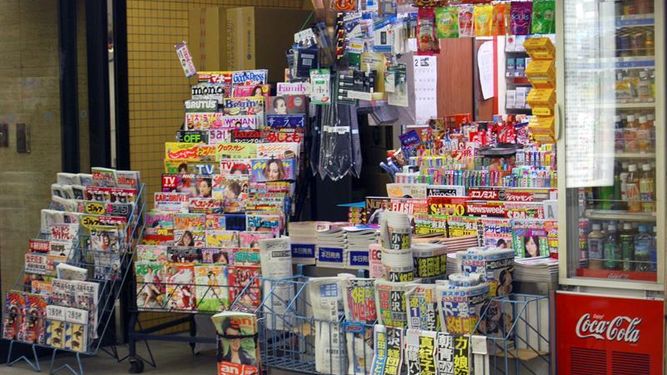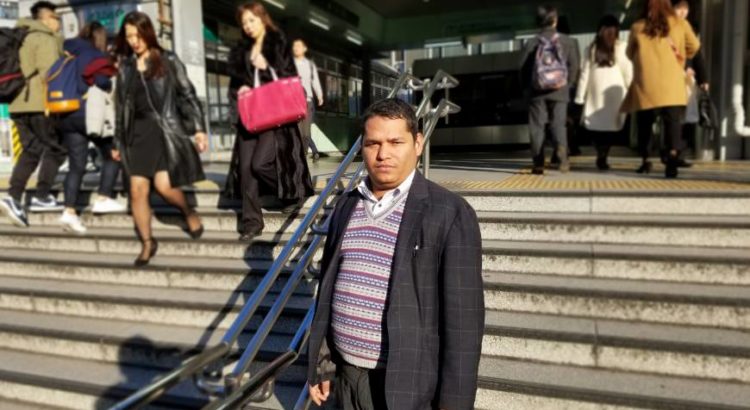Japón/Enero de 2017/Fuente: Japan Today
RESUMEN: Con la llegada de las tecnologías basadas en Internet y móviles, una nueva generación de innovadores en tecnología educativa -o EdTech- está interrumpiendo el sector de la educación. Pioneros, fundadores de la puesta en marcha, capitalistas de riesgo y educadores están introduciendo nuevos métodos de aprendizaje y entrenamiento. Al hacerlo, utilizan smartphones, tablets y aplicaciones, o plataformas como sistemas de gestión de aprendizaje. Al mismo tiempo, incorporan elementos como el análisis, los grandes datos y la automatización para optimizar la productividad y personalizar el aprendizaje.
With the advent of Internet-based and mobile technologies, a new generation of innovators in education technology — or EdTech — is disrupting the education sector.
Pioneers, startup founders, venture capitalists, and educators are introducing new methods of learning and training. In doing so, they utilize smartphones, tablets, and apps, or platforms such as learning management systems.
At the same time, they incorporate elements such as analytics, big data, and automation to optimize productivity and personalize learning.
The result? How, where, and when we learn — as well as the pace and quality of learning — are being challenged and changed. There is a shift from teacher-focused to student-centered education.
STARTING UP IN JAPAN
US-headquartered Knewton Inc entered the EdTech market in Japan in 2015.
Speaking to The Journal, Knewton Japan Managing Director Akira Tanaka said: “Our core product is a software service to realize an adaptive platform. We also have a consultation service. Together, they provide adaptive products to publishers and educational institutions.”
Knewton’s platform has a recommendations component with real-time suggestions based on a learner’s personal proficiency. An analytics element adds transparency to a learner’s progress via personalized data, and an insights service gives content creators a “big picture” snapshot of performance.
In Japan, Knewton has partnered with Zoshinkai Publishers Inc (Z-kai), the holding company of Z-kai Group and the leading provider of distance-learning services and publisher of text books and reference books. A group company, Z-kai Educe, has a large network of classrooms and courses to prepare students for entrance exams.
“For 85 years—since the company was established in 1931 — we have been providing many different courses, tailored to various needs, to nurture people from kindergarten to students sitting for university entrance examinations,” Z-kai CEO Takaaki Fujii told The Journal.
Since July 2015, Knewton has partnered with Z-kai to enter the English-language learning market.
“Z-kai are very good partners for us. We launched our first course with them, called Adaptie,” Tanaka said.
Adaptie is a self-learning program for language students planning to sit for the Test of English for International Communication (TOEIC), a certification in Japan for English learners.
“Its strength is that it corresponds to all levels and topics. Teaching materials have had fixed levels until very recently, and were divided by each target score. But Adaptie responds to target scores by setting learning achievement levels for each problem,” Fujii explained.
More products, Fujii and Tanaka said, are in the works, especially in the areas of academia, corporate training, lifelong education, and K–12.
CODERS AND MAKERS
Silicon Valley-based startup Make School is also making waves in Japan’s EdTech industry via partnership with Z-kai. Established in 2012, the school offers courses and curricula on how to use programming to build and launch products such as apps, co-founder Jeremy Rossmann told The Journal.
Through its collaboration with Z-kai in Japan, the school has created curricula and short-term courses for writing code, learning how to clone and test existing software, and learning how to make mobile app platforms.
“[Through our partnership with Make School] we aim to have the students acquire abilities that are required as 21st century skills through learning programming while using English,” Z-kai’s Fujii said.
“During the summer break in 2016, we had 20 students in a classroom in Tokyo’s Akihabara district. We are looking to have weekend and afterschool courses, and are gearing up for a more substantial winter and summer program for 2017,” added Rossmann.
In future, the partners hope to provide fulltime classes, online learning programs, and programs for schools in a variety of subject areas.
BRING YOUR OWN DEVICE
For Adam McGuigan, head of school at Kyoto International School (KIS), an effective way to ensure tech-enabled education is to have a flexible EdTech policy across all subjects.
“We don’t have a standalone computer lab, or a single specialized information and communications technology (ICT) teacher. Our approach is to ask: is there an ICT tool that we can use to enhance the learning experience for students? If the answer is yes, we use it.”
Since 2015, KIS’s middle-school learners have enjoyed one-to-one programs based on the concept of bring-your-own-device (BYOD), an approach that allows students and educators to use any private device to gather, manage, and share educational content. Classes on “digital citizenship” are at the core of the school’s EdTech policies.
Christine Kawano Usyak is a homeroom teacher at KIS. She is also an Apple Distinguished Educator, a qualification managed by Apple Inc. that prepares teachers to be users and advocates of the tech giant’s suite of EdTech tools.
In practice, Usyak relies on a mix of tools. Her go-to devices include smartphones, Chromebooks, and Chromecast, a digital media device that can broadcast images, video, sound, and webpages from a phone or computer to a television screen.
DIGITAL CITIZEN
Seisen International School (Seisen) in Tokyo, a provider for the K–12 segment, has also embraced the EdTech revolution.
A social sciences teacher at the school, Nathan Gildart prepares students for the future by emphasizing positive digital citizenship.
“We have a one-to-one strategy that teaches something called ‘21st Century Skills’ — which is similar to what used to be called ‘Citizenship,’ but adapted to life in the Internet age, where we all have digital identities.”
“We teach kids to do research, to synthesize information, to make presentations, to think critically, to think of online safety and security, including issues like cyberbullying. The difference today is that we use a variety of technological tools, rather than a blackboard and chalk.”
Gildart is a Google for Education Certified Trainer and an Instructional Technology Coach. Such qualifications allow him to support teachers wishing to apply technology in their teaching using EdTech tools created by Google.
Apps within Google’s teaching platforms (called G Suite for Education) optimize and centralize software for presentations, scheduling, and documentation. Smartphones, iPads, Chromebooks, and mobile apps are also commonplace devices and tools used at Seisen.
CORPORATE TAKEOVER
In addition to K–12 and academia, the corporate world — especially employee training — is undergoing change.
“We have been the innovators in eLearning since 1999 and provide full learning management systems (LMSs), ePortfolios, content repositories, learning analytics, and mobile technology,” Ian Smissen told The Journal. Smissen is a senior consultant at D2L Corporation (formerly, Desire2Learn).
D2L also provides “services to aid in strategy and implementation of new learning programs like competency-based education and learning analytics initiatives,” Smissen added.
About 80 percent of the company’s customers are in K–12 or higher education (split 50/50). Corporate clients — a fast-growing segment for the company— comprise the rest.
In the corporate sector, D2L is expanding its services “beyond compliance to facilitating learning — from leadership development to training sales people to sharing knowledge and collaborating,” Smissen explained.
“We help companies increase employee engagement through learning, and by providing a range of new learning experiences that include video, social, and game-based learning paths. This variety of experiences is what companies want to use and what employees expect,” he added.
Headquartered in Canada, D2L has operations in North America, Latin America, the Middle East, Asia–Pacific, and Australia. The company is looking to expand operations into Japan.
RISING STARTUP
A relative newcomer to the learning management service space, Japan-based Coursebase Inc, which was incorporated in 2012, is also seeking to disrupt the corporate learning space.
“We are a learning LMS provider. Our Software as a Service (SAAS) platform is used to manage the workflow of training,” explained John Hideyoshi Martyn, who is co-CEO and co-founder of Coursebase.
“Companies use our single-page SAAS applications to manage their workflow: from creating training courses or content to assigning it to managing submissions to generating reports.”
Via the company’s LMS, users can share documents, audio, video, and images; there is also a component for analytics, which provides personalized data and insights.
Users are typically trainers and learners in legal, human resources, management, and compliance departments of companies, while clients hail from the tech, legal, retail, and finance world.
FEAR FACTOR
Many experts say Japan lags behind the United States when it comes to EdTech penetration. They give a variety of reasons for this.
Teachers here may worry that innovation will render their jobs obsolete, said Seiko Koike, content integration analyst at Knewton. A conceptual misunderstanding about EdTech tools — which are intended to increase efficiency and outcomes, not replace teachers — may be at the root of such sentiments, Koike added.
Allison Baum, a managing partner at venture capital (VC) firm Fresco Capital, agrees. “For an EdTech startup to succeed in Japan, you need people with experience in education, but not so much that they are stuck in their ways.” Fresco Capital has 17 companies in its EdTech portfolio worldwide, including Make School, who they connected to Z-kai for Make School’s entry to the Japan market.
The amount of red tape in Japan surrounding the approval procedure for new technologies in public institutions — which can take between 18 and 24 months — is also a concern, said Martyn from Coursebase.
“For a startup that needs to ramp up revenue within 12 months, that is just too long,” he explained.
In addition to red tape, a lack of financing within the public sector is also a problem for startups in the EdTech space in Japan, James Riney pointed out. Riney is the country head of 500 Startups, a Silicon Valley-based VC company that counts Coursebase in its portfolio of companies.
FIRST-MOVER
Despite the challenges, all the experts said EdTech has a lot of scope for adoption and growth in Japan and around the world, and agreed that Japan is well placed for the EdTech revolution.
Alec Couros, an expert on EdTech and associate professor of educational technology and media at the University of Regina, in Canada, said: “A trend that is emerging is for just-in-time [systems] and assessment, and the merger of Facebook-like platforms with social metrics and EdTech tools or LMS systems.
“The ‘gamefication’ of learning, which creates a competitive atmosphere for study that will likely increase user engagement, is also a growing trend.”
“Japanese place a lot of value on education. There is a lot of competitiveness among schools, students, and companies for the best talent,” Knewton’s Tanaka said.
Fujii from Z-kai was of the same sentiment, and added: “We think that EdTech will continue to expand in Japan. There is an ICT policy intended for the introduction of digital devices, digital textbooks, etc, in 2020.
“And even if the timing or scope of those initiatives will not progress as planned, we think the overall trend will be unchanged.”
Ultimately, necessity may be the mother of adoption, with the realities of the modern economy being the spur for change.
“It used to be that once you had a degree, you got a job related to that degree, and you worked in that position for the rest of your life. But the reality is that technology is changing so fast that you have to re-educate yourself every two years.
“And there will come a time when people realize that education is not just K–12. It is also university education and job training; it is about getting ready for employment, finding it, and growing within a given career,” said Baum.
Fuente: https://www.japantoday.com/category/lifestyle/view/startups-venture-capitalists-and-teachers-disrupt-education














 Users Today : 7
Users Today : 7 Total Users : 35460216
Total Users : 35460216 Views Today : 10
Views Today : 10 Total views : 3418905
Total views : 3418905